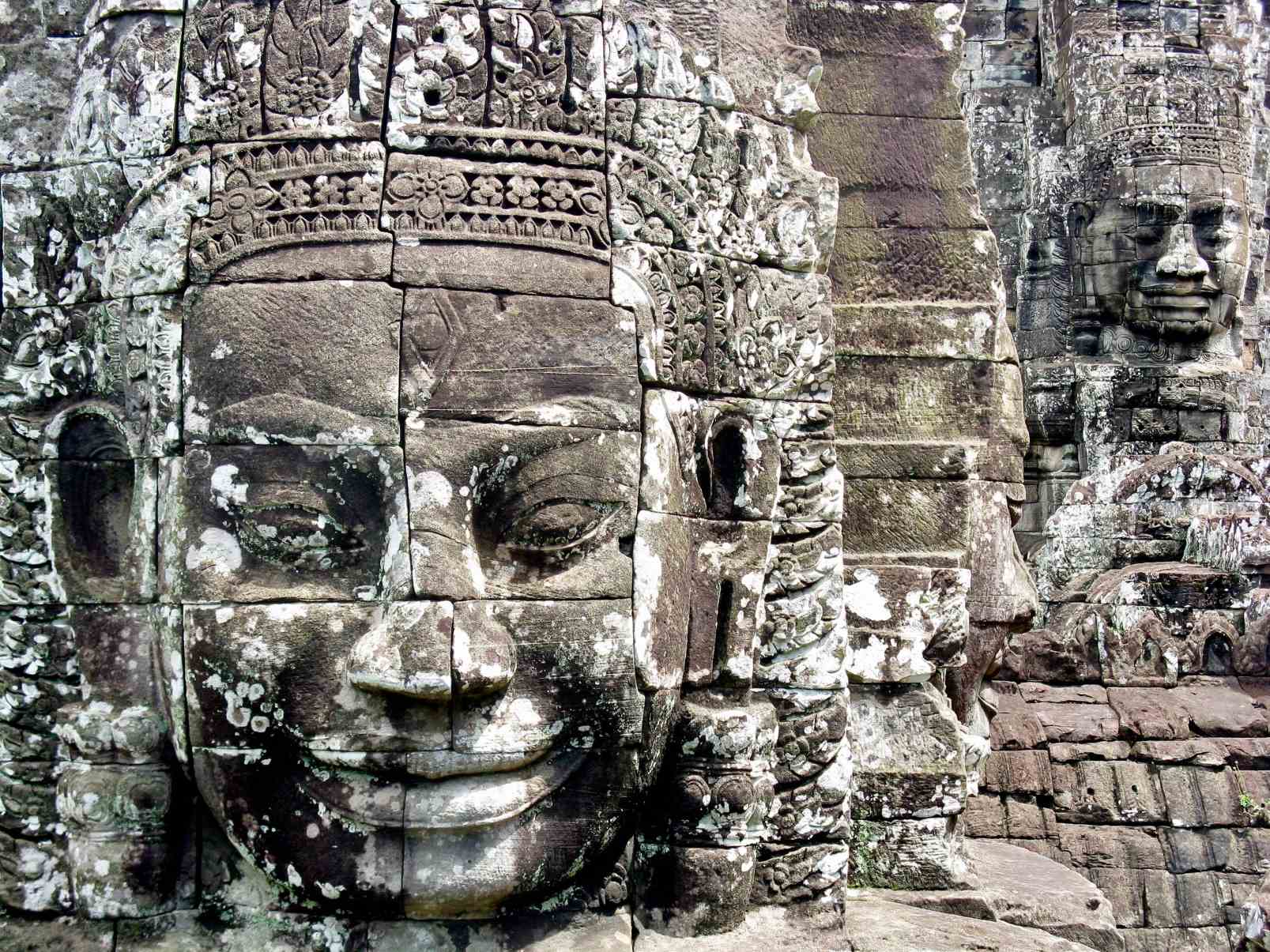Mystery Of Bayon Temple Stone Faces

Have you ever wondered about the mystery behind the stone faces of Bayon Temple? Located in Cambodia's Angkor Thom, this ancient site features over 200 massive stone faces that seem to watch your every move. Built in the late 12th century by King Jayavarman VII, the temple's faces are believed to represent Avalokiteshvara, a Buddhist deity. Others think they depict the king himself. The Bayon Temple is a blend of spirituality and history, making it a must-visit for anyone fascinated by ancient architecture. Ready to unravel the secrets of these enigmatic faces? Let's dive into the history and significance of this iconic temple.
The Enigmatic Bayon Temple
Bayon Temple, located in Cambodia's Angkor Thom, is famous for its mysterious stone faces. These faces, carved into the temple's towers, have puzzled historians and visitors alike. Let's explore some of the most intriguing aspects of these stone faces.
The Faces of Bayon Temple
The stone faces of Bayon Temple are a marvel of ancient craftsmanship. Each face has unique features, yet they all share a serene expression. Here are some key points about these faces:
Number of Faces: Bayon Temple boasts over 200 stone faces. Each tower has four faces, one on each side, looking out in different directions.
Expression: The faces have a calm, smiling expression, often referred to as the "Mona Lisa of Southeast Asia." This serene look has led to much speculation about their meaning.
Size: Each face is about 4 meters high. The sheer size of these faces adds to their imposing and mysterious presence.
Theories Behind the Faces
Many theories attempt to explain the purpose and origin of the Bayon Temple faces. Scholars and historians have debated these theories for years. Here are some of the most popular ones:
Representation of Avalokiteshvara: Some believe the faces represent Avalokiteshvara, the Bodhisattva of Compassion. This theory suggests the faces symbolize the king's divine rule and his compassion for his people.
King Jayavarman VII: Another theory posits that the faces are modeled after King Jayavarman VII, the ruler who commissioned the temple. This idea suggests the faces were meant to project the king's omnipresence and authority.
Combination of Both: A third theory combines the previous two, suggesting the faces represent both the king and Avalokiteshvara. This dual representation would emphasize the king's divine right to rule and his compassionate nature.
The Construction of the Faces
The construction of the Bayon Temple faces is a testament to the skill and ingenuity of ancient Khmer architects. Here are some fascinating details about their construction:
Materials: The faces were carved from sandstone, a material abundant in the region. Sandstone's durability has helped preserve the faces for centuries.
Techniques: Ancient craftsmen used chisels and hammers to carve the faces. The precision and detail achieved with these simple tools are remarkable.
Alignment: The faces are aligned with the cardinal points, symbolizing the king's watchful eye over his kingdom. This alignment also has religious significance, representing the Buddhist concept of universal compassion.
The Legacy of Bayon Temple Faces
The stone faces of Bayon Temple continue to captivate visitors and scholars. Their enigmatic expressions and impressive craftsmanship make them a highlight of any visit to Angkor Thom. Here are some reasons why they remain significant:
Cultural Heritage: The faces are a vital part of Cambodia's cultural heritage. They reflect the artistic and architectural achievements of the Khmer Empire.
Tourist Attraction: Bayon Temple is a major tourist attraction, drawing visitors from around the world. The faces are a key reason for the temple's popularity.
Inspiration: The faces have inspired countless artists, writers, and historians. Their mysterious nature continues to spark curiosity and creativity.
Bayon Temple's stone faces remain one of the most intriguing aspects of Cambodia's rich history. Their serene expressions and mysterious origins make them a must-see for anyone visiting Angkor Thom.
The Timeless Allure of Bayon Temple
Bayon Temple's stone faces leave a lasting impression. These enigmatic carvings captivate visitors, blending history with mystery. Each face tells a story, reflecting the artistry and spiritual beliefs of the Khmer Empire. The temple's unique architecture and serene expressions make it a must-visit for history buffs and casual travelers alike.
Exploring Bayon Temple offers a glimpse into the past, where every corner reveals something new. The intricate details and grand scale of the faces showcase the skill and dedication of ancient craftsmen. As you walk through the temple, you can't help but feel a connection to a time long gone.
Visiting Bayon Temple is more than just a trip; it's an experience that stays with you. The stone faces, with their timeless gaze, invite you to ponder the mysteries of history and the human spirit.

